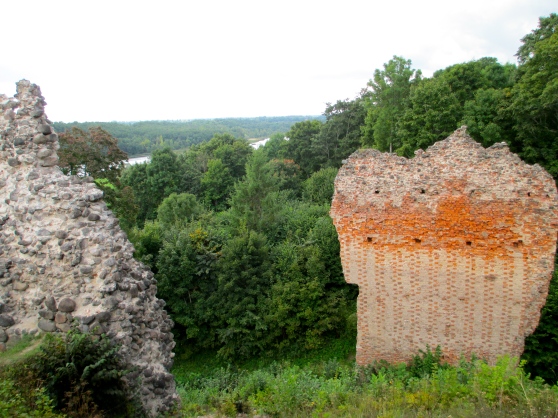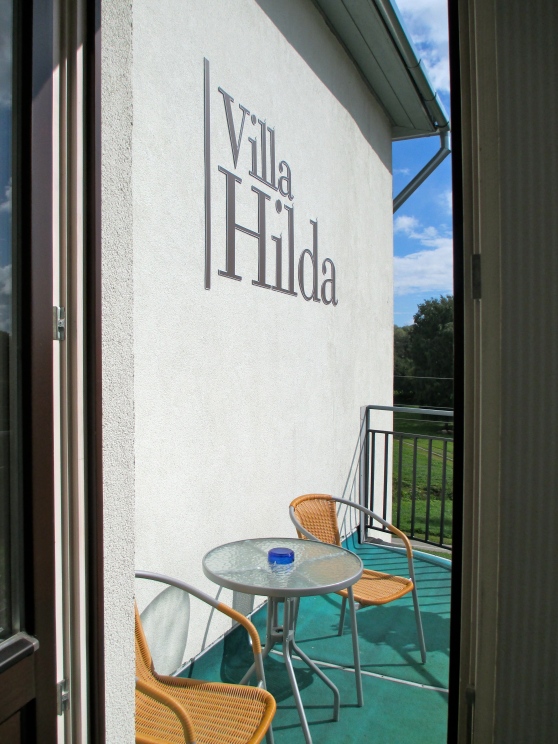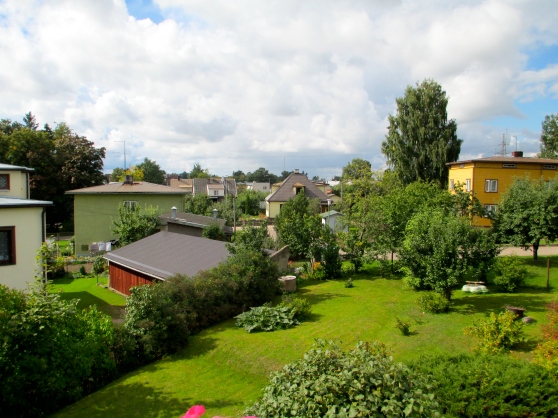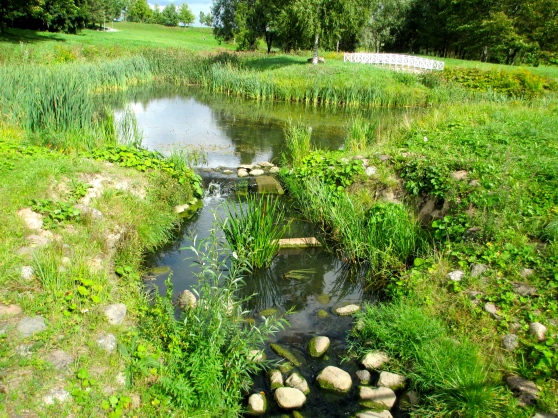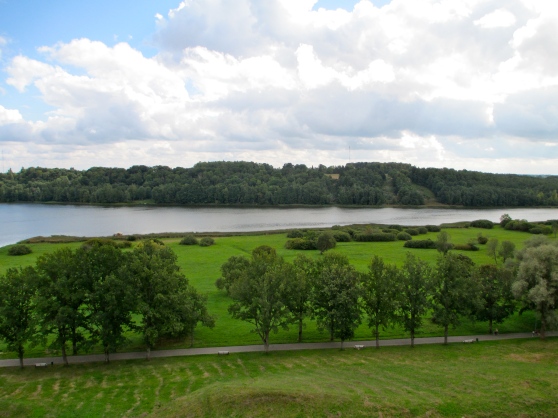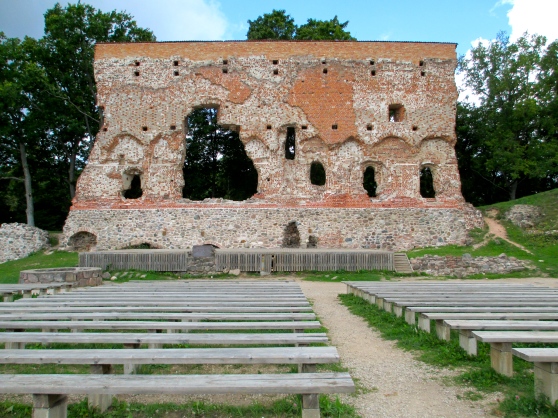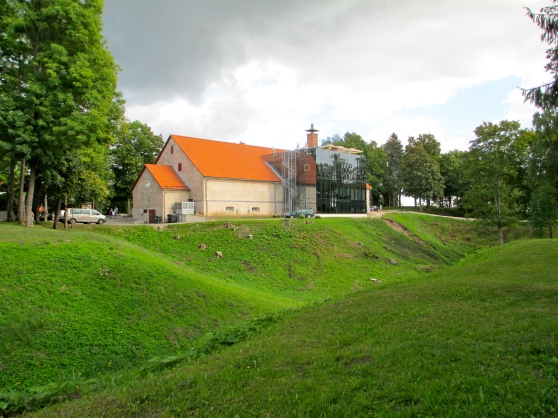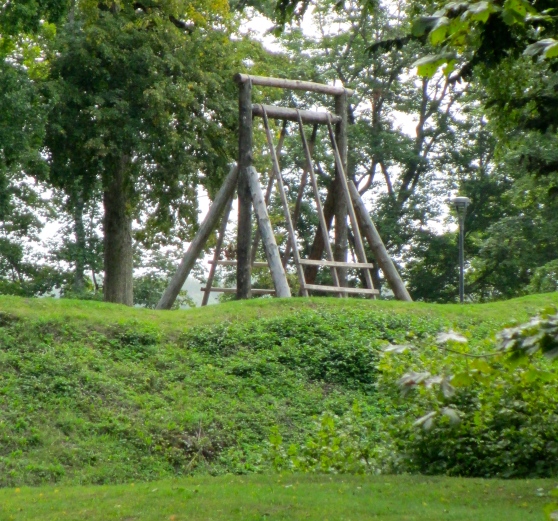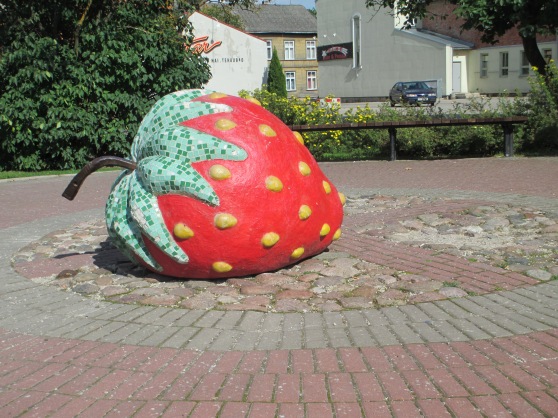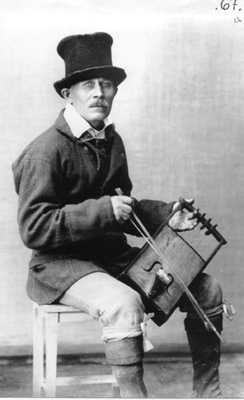Okay, so technically Teadmiste Päev (the Estonian holiday for the first day of school) was yesterday, September 1st, but because yesterday was a Sunday the school year started today. I have been waiting for this day for a very long time. I am finally a student at the Viljandi Culture Academy!
Today was definitely the most unique first day of school I have ever had. Actually there aren’t any classes this week at all. After waking up early for breakfast at the guest house and then having a lazy morning in my room I ventured off to find the coffee place I had heard about. It’s called “Rohelise Maja” and when I was in DC for my Fulbright orientation a returning Fulbright Scholar told me it had the best coffee in Viljandi. In fact he gave me his stamp card that already had two stamps on it! Well, now it has three. I got a latte and had their tomato, carrot, and lentil soup. It was very good. I finished up my little lunch just in time to head to the Folk Music Center (Pärimusmuusika Ait) for the opening ceremony.
I took my seat in the hall and looked around while friends greeted each other and chatted. Then there was what sounded like a dull gong and I was amazed at how quickly everyone quieted down. I am sure if the hall was full of Americans it would have taken much longer for people to finish their conversations and realize the ceremony was about to begin. Then everyone stood up, so I did too. Someone started singing and everyone joined in. It was the Estonian National Anthem (Eesti Hümn) and it was beautiful. Everyone was so together and Estonians really do have beautiful voices. Hearing it made me light up. After the anthem was over someone in the audience started a call and response song similar to ones I have heard over the past year. Although I had no idea what was being sung, I joined in when I could.
At this point we all sat down and then the talking began. Several people gave little speeches and I think some sort of award was presented to someone, but I really couldn’t tell you. Honestly, I caught a few words here and there, but for the most part I had no idea what was going on. I clapped when everyone else did and smiled when the room laughed at a joke I didn’t understand. In between some of the talking a guitarist and vocalist got up and sang a song in English. I enjoyed it very much and remember thinking, “Now this is a language I can understand” (music I mean…not the English). These two also performed at the end of the ceremony, but this time in Estonian.
When the people who I assume were important in someway were done with their welcome speeches they started to call groups of students up to the stage. When this happened I started to get nervous. I turned to the woman sitting next to me and asked if they were calling new students by department. We had a difficult time understanding each other, but after a while she confirmed that was what was happening. I told her I was a music student and asked if I should go up as well. When they called pärimusmuusika I looked at her and she nodded. So I walked up and joined five or six other students on the stage. Each name was called and they went to shake hands and receive a welcome bag. As each name was called I hoped mine would be next. They didn’t call my name and I was left standing there awkwardly, feeling under-dressed, wishing I had stayed in my seat, and feeling the eyes of a room full of people wondering who I was. Ultimately I walked back to me seat bag-less and without a handshake. My tutor, Kaisa, later made me feel better saying that someone is left standing awkwardly on the stage almost every year.
When the ceremony concluded I went and stood in the hallway for a bit not knowing what to do. Then I decided to go talk to someone who looked like they might be some sort of authority figure. She was a teacher of native crafts and graciously called someone to find out what to do with me. I then hopped in her car and she drove me to the music building, where she walked me in and handed me off to some people there. After some quick introductions they told me to come back later for my scheduled meeting with the head of the music department. I had just enough time to walk back to the guest house, dig out my rain jacket from my suitcase, and then head back.
After a few more awkward interactions I was very happy to meet the person that was going to help me pick classes. Basically I am going to take a bunch of practical classes because lectures would be super challenging and frustrating for me. There are so many great classes that are perfect for my interest in ethnomusicology that I would not be able to take in the States, but maybe I can try to take one or two in the spring when my language skills have improved. I also finally found out who my fiddle teacher will be. I am really excited because it turns out I will be studying with Maarja Nuut, the same woman who was one of the first Estonian musicians I discovered over a year ago during my many YouTube searches for Estonian fiddle music. I have not met her yet, but I think I will like her. It is still a little surreal that because Viljandi, and all of Estonia, is so small I will probably end up meeting many of the people I have heard about and listened to for the past year.
While my classes may change if any scheduling problems arrive, let me give you a quick list of the classes I will be taking: fiddle lesson, piano, kannel (see Estonian Traditional Music Center), theory, transcribing, practical harmony, voice training, improvisation, rhythmics…in addition I will be part of two separate bands. There is also a “class” which involves going to some woman’s house in the countryside for three days and exploring the local culture. Now if that isn’t hands-on education and real-life application I don’t know what is.
Here are some pictures I took yesterday when I had nothing better to do than walk around and get lost…


